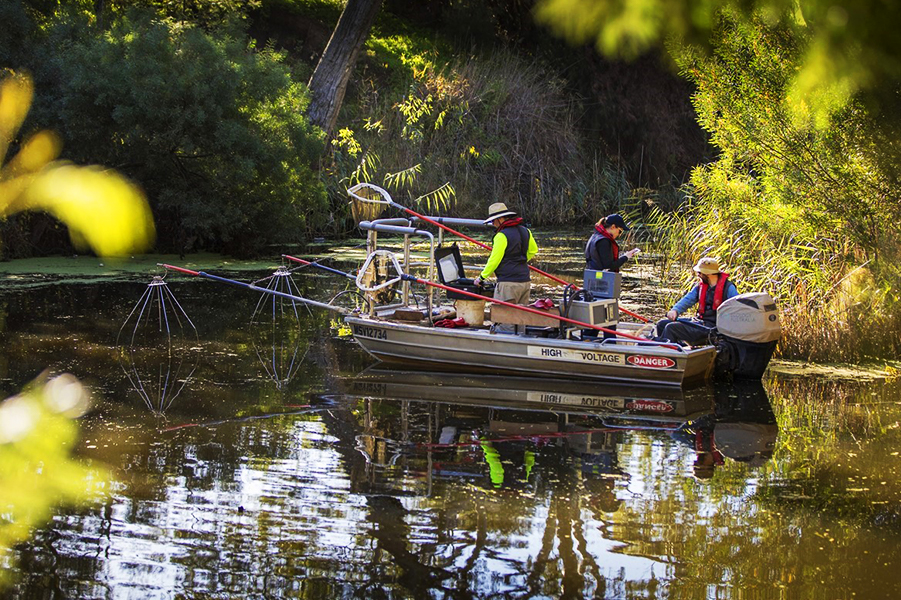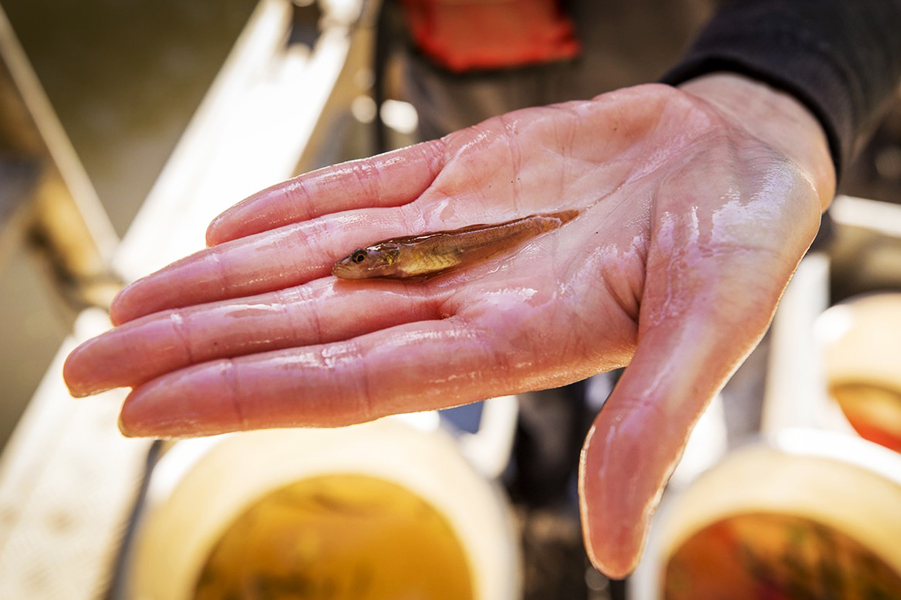Environmental water impacts on the Lower Werribee River’s fish populations
Fish in the lower reaches of the Werribee River are benefiting from the delivery of environmental water to help provide cues for migration.
Challenges for the Werribee River
The Werribee River is facing challenges from increasing urbanisation within its catchment, which contributes to increased erosion and salinity and a loss of habitat. River regulation has had a detrimental impact on aquatic biodiversity, and disruptions to river flow regimes can negatively affect organisms through habitat changes.
Being in a lower rainfall area in Victoria contributes to the decline in river biodiversity.
Water for the environment helps
‘Water for the environment’ – or environmental water – is water that is released from storage dams into rivers, floodplains, wetlands and estuaries to improve waterway health and protect environmental values. Improving waterway conditions improves waterway values and the benefits that can be derived from the waterway.
Environmental flows are being used to mitigate flow regime impacts, and understanding their effectiveness is important for improving management practices. As such, water released into rivers and wetlands can be actively managed to meet specific environmental needs. It is important to understand and release the right amount of water at the right time to maintain habitat integrity.
The Healthy Waterways Strategy Werribee Catchment Region Program, co-designed by stakeholders, landowners, Traditional Owners and community groups, describes the environmental and social values of the rivers, wetlands and estuaries within the catchment. One of these values is Fish (freshwater and estuarine species).

Assessing how environmental water helps fish
As part of the Victorian Environmental Flows Monitoring and Assessment Program (VEFMAP), Melbourne Water is monitoring fish in the Lower Werribee River to understand the population and condition of fish species as well as whether the bluestone ford is adequately allowing fish to move up and down stream.
Stage 6 of VEFMAP is funded by the Victorian Government and supported by the Arthur Rylah Institute for Environmental Research (ARI), catchment management authorities (CMAs), Melbourne Water, the Victorian Environmental Water Holder, and independent scientists.
“VEFMAP is a state-wide research project looking at how environmental water delivery benefits waterways and we are working with VEFMAP to improve our understanding and ensure our releases have the best ecological outcomes”
Tiana Preston of Melbourne Water

Monitoring of the Werribee River began in 2016. The aim of this component of the program is to examine the links between streamflow (including environmental water releases) and native, diadromous fish life-history processes (recruitment and dispersal).
“A lot of our environmental water releases are targeted at the lower sections of the Werribee River because it receives the least amount of natural flow. So our water releases are designed to replicate some of the natural flows to allow fish to migrate in and out” she said.

“What we found from our monitoring, was that spring flows stimulate Common Galaxias to migrate into the Lower Werribee River. Higher flows in spring result in increased fish migration over the following 3-4 week period as the fresh water acts as a migration cue”. Tiana said.
Long term monitoring of water for the environment is an important step in meeting the Healthy Waterways Strategy objectives of environmental water.
The findings of this study have assisted in identifying how non-flow related factors affect native fish populations, as well as provide the first quantified links between components of river flows and population dynamics in the Werribee River.
These results and the continuous monitoring of waterways through collaborative partnerships are essential in maintain healthier waterways outcomes for the Werribee River.